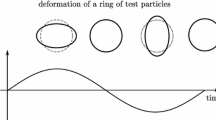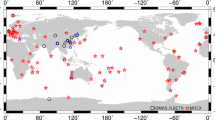Abstract
MIT's Lincoln Laboratory has developed a computer driven, rapidly slewing (≃4° s−1), electro-optical (≃3″ resolution) telescope. This enables the rapid measurement of angles and instantaneous angular rates for artificial satellites. The simultaneous acquisition of angles and angular rates constitutes a new initial orbit problem which has been solved. Three different methods of solution are presented including an exact, analytical one. Numerical tests on six widely different satellite orbits indicate that the topocentric distance can be determined to better than 1% (and usually as well as 0.1%) for most satellites after a 5–10 min observation interval.
Similar content being viewed by others
References
Chauvenet, W.: 1863,Manual of Spherical and Practical Astronomy, Vol. I, Lipincott, Philadelphia.
Moulton, F. R.: 1902,An Introduction To Celestial Mechanics, The Macmillan Co, New York.
Author information
Authors and Affiliations
Additional information
The views and conclusion contained in this document are those of the contractor and should not be interpreted as necessarily representing the official policies, either expressed or implied, of the United States Government.
This work was sponsored by the Department of the Air Force.
Rights and permissions
About this article
Cite this article
Taff, L.G., Hall, D.L. The use of angles and angular rates. Celestial Mechanics 16, 481–488 (1977). https://doi.org/10.1007/BF01229289
Received:
Issue Date:
DOI: https://doi.org/10.1007/BF01229289




